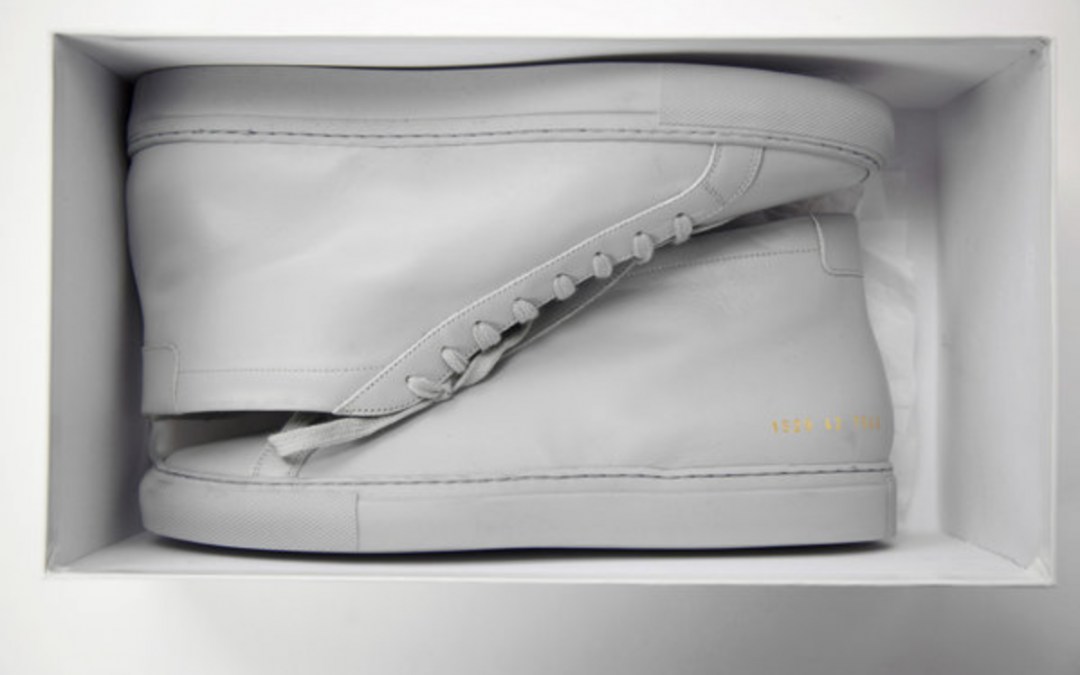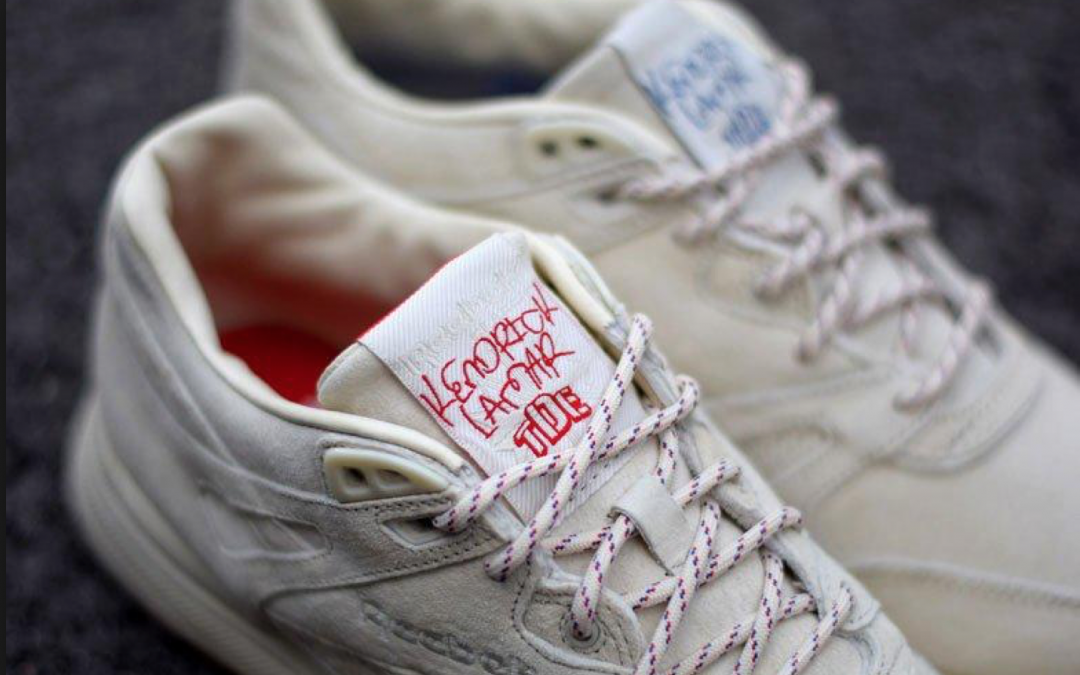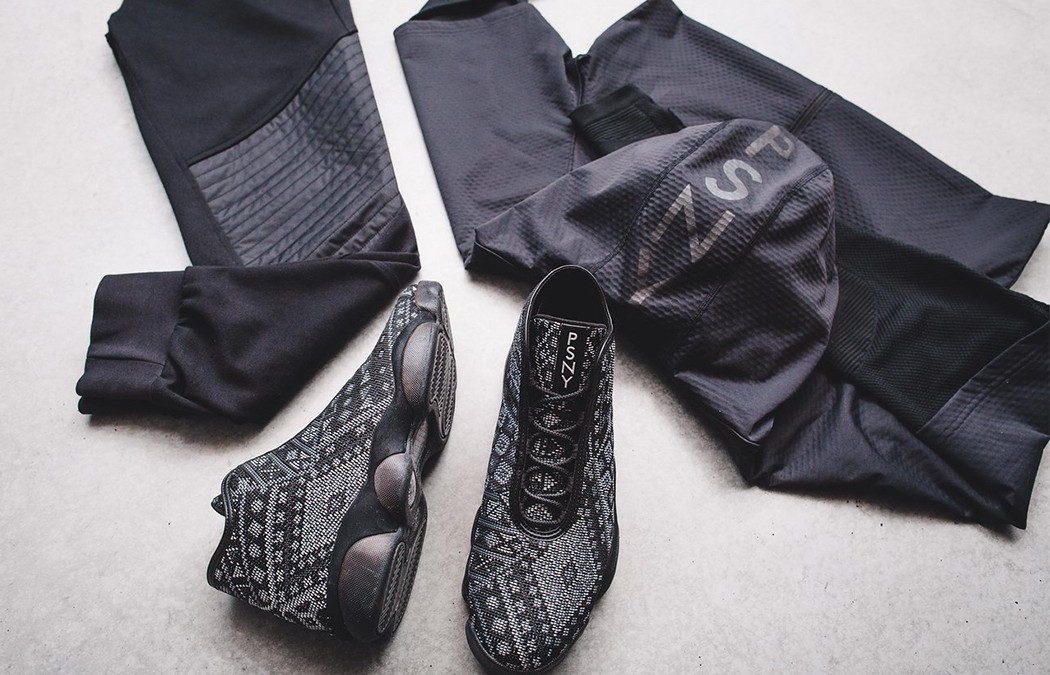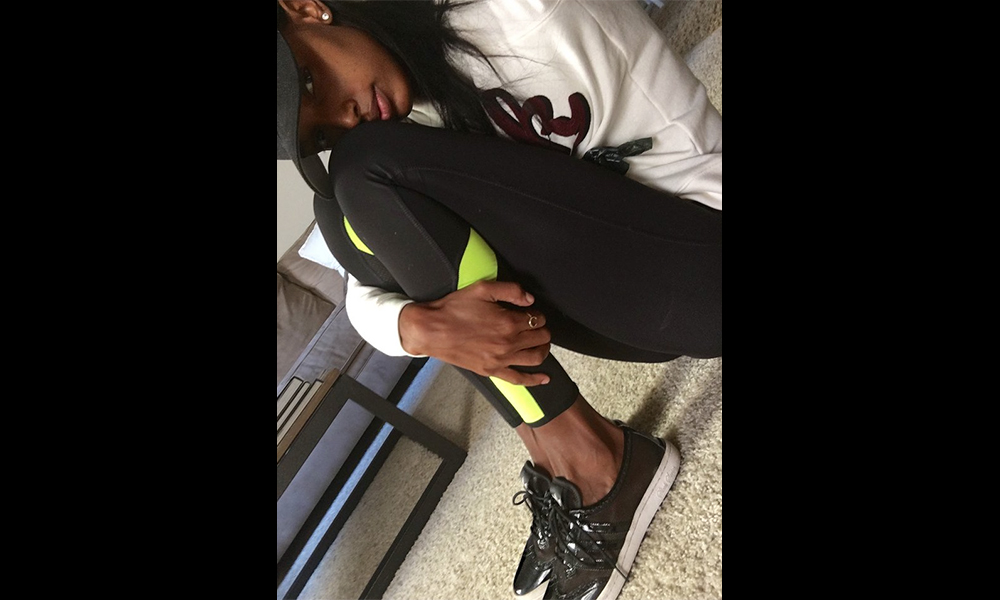
by Cwe | Nov 8, 2015 | Sneaker
NYT about Common Projects.
The Men Behind a Minimalist Sneaker Label
Simple Guys Flavio Girolami, left, and Peter Poopat, the low-key designers behind Common Projects sneakers. Michael Nagle for The New York Times
When one talks to Peter Poopat and Flavio Girolami, it is easy to forget that they are the design duo behind the label Common Projects, the super-minimalist sneaker worn by everyone seeking a hint of upscale cool, from the creative layman to Kanye West.
It’s also easy to forget because Mr. Poopat, 43, and Mr. Girolami, 42, would like you to. “It sounds silly, but we rarely tell anyone we just met what we do,” Mr. Poopat said.
He’s not exaggerating. While vacationing last July in Ibiza, Spain, with his wife and two children, Mr. Poopat was introduced to Amir Kassaei, the chief creative officer at DDB Worldwide. When Mr. Kassaei asked about his profession, Mr. Poopat answered innocently that he had a company “and we make shoes.” It was only when Mr. Kassaei pressed further that he coughed up the name of his global brand.
“Amir immediately jumped up and turned to my son and said: ‘You know who your father is? Your father is my hero. I have 50 pairs of his shoes,’ ” Mr. Poopat said with a laugh.
Such self-effacement is characteristic for the low-key sneaker duo known for a streamlined aesthetic that the Business of Fashion recently called “almost blank,” save a subtle line of gold-stamped numbers. “In a way, Common Projects doesn’t feel like ours,” Mr. Girolami said. “It feels like it has a life of its own and belongs to a lot of people.”
“A lot of people” is an understatement. The sneakers, which sell for about $400 a pair, are carried by more than 200 retailers worldwide, including department stores like Barneys and Beams International Gallery in Japan, forward-leaning emporiums such as Dover Street Market and Totokaelo, and digital hubs like Mr Porter and the Line.
And they have adorned the feet of countless cultural influencers, including Frank Ocean, Ellen DeGeneres, Nick Jonas, Alexander Skarsgard and Drake, as well as hordes of men’s magazine editors whose Common Projects-clad feet pepper the front rows of the global fashion week circuit.
“There is something about their sneakers that is a confidence booster for guys,” said Jim Moore, the creative director of GQ magazine. “I have some pairs that I’ve been wearing for over four years, and when I pull them out I still get more compliments than anything else in my closet. It’s a sneaker that everyone in the world knows about.”
That is remarkable, considering the pair’s aversion to self-aggrandizing and marketing. They have never advertised, for example. They have never hosted a party for their brand. And as of today, their Instagram account has not been updated in 31 weeks, for reasons unknown even to them.
“We try to stay quiet and let the brand speak for itself,” Mr. Girolami said with a shrug.
It seems to be paying off. According to Mr. Poopat, the brand had $10 million in revenue last year and employs six people split among two offices, in San Benedetto del Tronto, Italy, and New York.
“If you grow slow, you grow right,” Mr. Girolami said. “It’s much easier to make less mistakes.”
Birth of a Luxe Sneaker
The brand got its start “sometime in the mid-1990s” over sake at the Hiro Ballroom, now shuttered, underneath the Maritime Hotel in Chelsea.
The two became close friends after repeatedly bumping into each other “generally around the downtown fashion scene,” Mr. Girolami said. They would often meet up after work (at the time, Mr. Poopat was an art director for V Magazine and Mr. Girolami was a brand consultant for Italian shoe manufacturers) to vent about not being able to find that perfect desk lamp or dress shirt that suited their rarefied tastes.
It was at those boozy think tanks that they decided to collaborate on a series of projects. Hence the name “Common Projects.”
The two insist that their creative process has changed little since those early days. “We couldn’t find anything we liked that matched our vision,” Mr. Poopat said in June, sitting on a distressed leather sofa at the News, their longtime showroom in SoHo. “In some ways, we still can’t.”
The sneakers sell for about $400 a pair, and are carried by more than 200 retailers. Michael Nagle for The New York Times
Mr. Girolami was more blunt. “We liked to hang together, so maybe we would like to work together,” he said. “We were probably drunk.”
Deconstructing the sneaker quickly became their main focus. At the time, sneakerheads were into candy-colored Nike Dunks, the Japanese label Bathing Ape, and over-designed high-tops from European brands like D Squared and Dolce & Gabbana.
Mr. Poopat and Mr. Flavio deemed those sneakers too cartoonish to wear to an office. At the same time, they found formal shoes too stuffy for the gallery-hopping enclaves they inhabited.
“We were wearing slimmer clothes and we needed sneakers to go with them,” Mr. Poopat said.
So they distilled the sneaker to its essence, removing any flourishes and creating a low-top monochromatic shoe that resembles a pair of Stan Smiths, as reimagined by the American minimalist artist Carl Andre. The shoe was made with high-quality leather in Italy, through Mr. Girolami’s manufacturing contacts.
Their first shoe, the Achilles, was released in 2004 and was an instant hit with the fashion tribe. “There were sports sneakers and then there were dress shoes,” said Eugene Tong, the style director of Details magazine. “They were the first brand to bridge that gap.”
“They don’t get enough credit for what they’ve done and how they’ve changed the men’s wear landscape,” said Mr. Tong, who owns about 10 pairs of Common Projects. “They were the first people to give a proposition of a truly luxe sneaker.”
Still a Best Seller
These days, Common Projects is no longer the only luxury sneaker. Walk the sixth floor of the Dover Street Market in New York and it’s apparent that Mr. Poopat and Mr. Girolami’s vision has been co-opted by a stampede of high-low collaborations from labels like Adidas, Raf Simons, Superga and Comme des Garçons.
But James Gilchrist, Dover Street New York’s general manager, said that Common Projects remains the floor’s best seller. The brand “transcends so many different types of customers and age groups,” he said.
Indeed, the label’s monastic take on high-end footwear dovetails nicely with three major fashion trends of the past decade: the rise of sportswear, the influence of sneaker-driven blogs like Styleforum and Highsnobiety, and the growth of men’s wear.
Common Projects continues to expand with small refinements, like introducing the occasional new color and branching out with unexpected styles including suede combat boots and caramel-hued high tops that resemble a grown-up version of the Converse Chuck Taylor.
The publicity shy pair have never advertised, and had not updated their Instagram account for about 30 weeks. Michael Nagle for The New York Times
The brand has also loosened its rigid aesthetic through collaborations with designers like Tim Coppens (leather and mesh running shoes), Robert Gellar (lace-up hiking boots), and the eyewear brand Moscot (sunglasses). Last year, it started a women’s shoe collection, with small feminine updates to their classic men’s styles, earthy open-toed sandals and ankle boots with a small heel.
But for the most part, Mr. Poopat and Mr. Girolami prefer to keep Common Projects grounded. “We’re O.K. not necessarily trying to be the biggest thing,” Mr. Poopat said. “Even though we probably owe it to the brand to try.”
Mr. Girolami raised his hand as if to stop his partner from getting too far ahead of himself. “Yes, we could have grown faster and become bigger,” he said. “But you know what? We’re happy exactly where we are.”

by Cwe | Jul 29, 2015 | Sneaker
Every culture has it’s own unique slang that helps dedicated connoisseurs stay in tune with what they love to do. Sneakers aren’t much different, fanatics use these terms on a daily basis to communicate with each other. Every wonder what does DEADSTOCK mean? Well you came to the right place. We will school you on all of the trendy words that make up the sneaker culture.
Deadstock – DS – Is one of the most common terms used amongst sneakerheads. It implies that the shoe up for sale is brand new and never worn or tried on.
Very Near Deadstock – VNDS – If a shoe is worn slightly but is close to deadstock condition.
Near Deadstock – NDS – If a shoe is worn consecutively and shows slight wear but can pass as deadstock if cleaned and worked on.
Limited Edition – LE – A shoe that is produced in limited quantities and is only available through a select few retailers.
Player Exclusive – PE- A shoe that was produced under the supervision of a specific athlete and customized with certain colors or patterns that are designed accordingly to the athletes team or country affiliation.
Skateboard – SB – A shoe line dedicated to Skateboarding.
Original – OG – A shoe that was introduced before a retro version was released. This term is best associated with Nike shoes.
Air Max – AM- Nike initially introduced the the Air Max technology in 1987
on the Nike Air Max 1. The shoe is supported by an air cushioning that is placed underneath the foot.
Special Edition – SE – A shoe that celebrates a certain occasion and is released in limited quantities. This term is best associated with Nike shoes.
Reflective Material – 3M – A reflective technology commonly placed on sneakers produced by corporate conglomerate Minnesota Mining and Manufacturing Company.
ACG – All Conditions Gear – Is a collection produced by Nike focusing on outdoor sports such a mountain climbing, hiking and long distance walks. The ACG collection is best known for incorporating materials that comply with various weather conditions.
Jordan Brand – JB – A shoe line based around Michael Jordan. Shoes part of the line are also associated with the Air Jordan trademark.
No Fly Wire – NFW – Futuristic Nike models have incorporated the special flyer wire material, several pairs that are associated with the material were not produced with it and were categorized by NFW.
HTM – A set of shoes designed by Hiroshi Fujiwara, Tinker Hatfield, and Mark Parker. HTM is the first letter of each designers name.
Cool Gray – CG – CG – Cool Grey, usually used when talking about the Air Jordan 3, 4, 9, or 11
Lifestyle – LS – A special release typically associated with Jordan Brand which ties in matching clothing and sneakers. Generally lifestyle releases are limited.
Defining Moments Package – DMP – A package which consisted of an Air Jordan XI and Air Jordan VI, the release celebrated two pivotal points in Michael Jordans career. The package was limited and is a highly sought after item.
Air Force 1 – AF1 – One of the first trend setting shoes that comes in a traditional white/white colorway and over 3000+ random colorways. The shoe is produced by Nike and is one of the best selling shoes of all time.
Grade School – GS – Shoes produced for infants and children. A term that was invented by Nike.
General Release – GR – A shoe that is made available by most sneaker retailers, it is not a limited model and can be obtained quite easily when released.
Blue Ribbon Sports – BRS – The original footwear company started by Phil Knight. It would eventually lead to the establishment of Nike.
New In Box – NIB – Shoes that are never taken out of original packaging and are offered to consumers using the aforementioned terminology.
Collaboration – X – It is common amongst footwear companies and streetwear brands to collaborate on projects. To symbolize the combination an X would be used between the two company names I.E. adidas x 10 Deep.
Heat – Hard to find shoe models that are no longer available in retail stores.
Holy Grail – A shoe that has both sentimental and monetary value to the owner and supersedes the rest of the shoes in ones collection.
Sample – A shoe that is used for either promotional or wear test purposes.
Prototype – A sample that is never released to the public and is typically used for wear test purposes.
B-Grade – A shoe with flaws that is made available at manufacturer outlet stores.
Beater – A shoe that is worn on a daily basis without care.
Retro – A shoe that is re-released and molded to the specification of the original model.
Quickstrike – A shoe that is released in limited quantities in specialized retail stores.
Hyper strike – A shoe that is released in extremely limited quantities and is not advertised or promoted till the shoe is made available to the public.
Bred – A Jordan shoe with a black and red colorway.
P-Rod – A line of shoes themed behind skateboarder Paul Rodriguez.
Hype – A shoe that receives a lot of attention before the actual release date.
Hypebeast – A person who takes the street wear culture up a notch and wears some of the most expensive and sought after items available.




